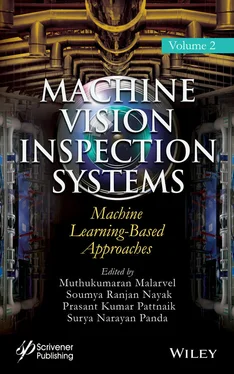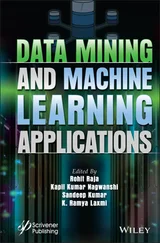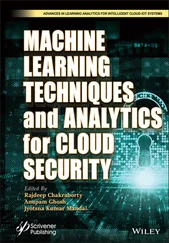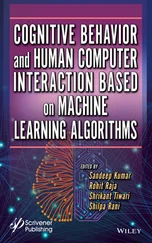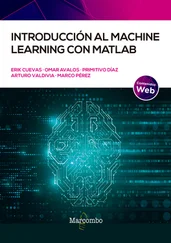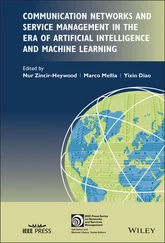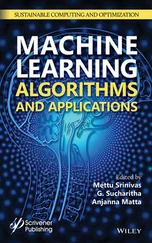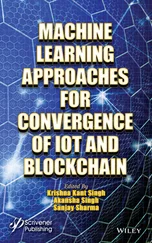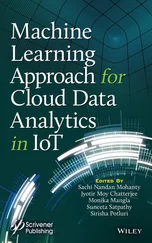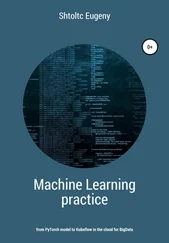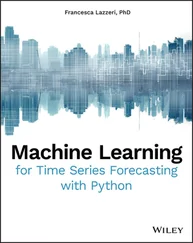1 Cover
2 Title Page
3 Copyright
4 Preface
5 1 Machine Learning-Based Virus Type Classification Using Transmission Electron Microscopy Virus Images 1.1 Introduction 1.2 Related Works 1.3 Methodology 1.4 Results and Discussion 1.5 Conclusion References
6 2 Capsule Networks for Character Recognition in Low Resource Languages 2.1 Introduction 2.2 Background Study 2.3 System Design 2.4 Experiments and Results 2.5 Discussion References
7 3 An Innovative Extended Method of Optical Pattern Recognition for Medical Images With Firm Accuracy—4f System-Based Medical Optical Pattern Recognition 3.1 Introduction 3.2 Optical Signal Processing 3.3 Extended Medical Optical Pattern Recognition 3.4 Initial 4f System 3.5 Simulation Output 3.6 Complications in Real Time Implementation 3.7 Future Enhancements References
8 4 Brain Tumor Diagnostic System— A Deep Learning Application 4.1 Introduction 4.2 Deep Learning 4.3 Brain Tumor Diagnostic System 4.4 Computer-Aided Diagnostic Tool 4.5 Conclusion and Future Enhancements References
9 5 Machine Learning for Optical Character Recognition System 5.1 Introduction 5.2 Character Recognition Methods 5.3 Phases of Recognition System 5.4 Post-Processing 5.5 Performance Evaluation 5.6 Applications of OCR Systems 5.7 Conclusion and Future Scope References
10 6 Surface Defect Detection Using SVM-Based Machine Vision System with Optimized Feature 6.1 Introduction 6.2 Methodology 6.3 Conclusion References
11 7 Computational Linguistics-Based Tamil Character Recognition System for Text to Speech Conversion 7.1 Introduction 7.2 Literature Survey 7.3 Proposed Approach 7.4 Design and Analysis 7.5 Experimental Setup and Implementation 7.6 Conclusion References
12 8 A Comparative Study of Different Classifiers to Propose a GONN for Breast Cancer Detection 8.1 Introduction 8.2 Methodology 8.3 Results and Discussion 8.4 Conclusion References
13 9 Mexican Sign-Language Static-Alphabet Recognition Using 3D Affine Invariants 9.1 Introduction 9.2 Pattern Recognition 9.3 Experiments 9.4 Results 9.5 Discussion 9.6 Conclusion Acknowledgments References
14 10 Performance of Stepped Bar Plate-Coated Nanolayer of a Box Solar Cooker Control Based on Adaptive Tree Traversal Energy and OSELM 10.1 Introduction 10.2 Experimental Materials and Methodology 10.3 Results and Discussion 10.4 Conclusion References
15 11 Applications to Radiography and Thermography for Inspection 11.1 Imaging Technology and Recent Advances 11.2 Radiography and its Role 11.3 History and Discovery of X-Rays 11.4 Interaction of X-Rays With Matter 11.5 Radiographic Image Quality 11.6 Applications of Radiography References
16 12 Prediction and Classification of Breast Cancer Using Discriminative Learning Models and Techniques 12.1 Breast Cancer Diagnosis 12.2 Breast Cancer Feature Extraction 12.3 Machine Learning in Breast Cancer Classification 12.4 Image Techniques in Breast Cancer Detection 12.5 Dip-Based Breast Cancer Classification 12.6 RCNNs in Breast Cancer Prediction 12.7 Conclusion and Future Work References
17 13 Compressed Medical Image Retrieval Using Data Mining and Optimized Recurrent Neural Network Techniques 13.1 Introduction 13.2 Related Work 13.3 Methodology 13.4 Results and Discussion 13.5 Conclusion and Future Enhancement References
18 14 A Novel Discrete Firefly Algorithm for Constrained Multi-Objective Software Reliability Assessment of Digital Relay 14.1 Introduction 14.2 A Brief Review of the Digital Relay Software 14.3 Formulating the Constrained Multi-Objective Optimization of Software Redundancy Allocation Problem (CMOO-SRAP) 14.4 The Novel Discrete Firefly Algorithm for Constrained Multi-Objective Software Reliability Assessment of Digital Relay 14.5 Simulation Study and Results 14.6 Conclusion References
19 Index
20 End User License Agreement
1 Chapter 1 Table 1.1 CA (in unit) of different classification techniques.
2 Chapter 2 Table 2.1 Comparison of related studies. Table 2.2 Model validation accuracy. Table 2.3 Classification accuracies within individual alphabets. Table 2.4 Accuracies of different MNIST models.
3 Chapter 3Table 3.1 Categorization of output values.
4 Chapter 5Table 5.1 Accuracy rate comparison for various algorithms [8].
5 Chapter 6Table 6.1 Details of knot image dataset.Table 6.2 Details of augmentation required image dataset.Table 6.3 Confusion matrices for the training and testing sample.
6 Chapter 7Table 7.1 Usecase specification.
7 Chapter 8Table 8.1 Dataset attribute of WBCD.Table 8.2 Performance analysis of classification techniques.
8 Chapter 9Table 9.1 Related work.Table 9.2 People data for the participants to acquire dataset 1 using leap motio...Table 9.3 Random geometric transformations applied to the 3D points representing...
9 Chapter 10Table 10.1 Comparing online learning algorithm to use solar cooker.Table 10.2 SSBC analysis of cooking materials with furious SiO 2/TiO 2performance...
10 Chapter 13Table 13.1 Summary of results.
11 Chapter 14Table 14.1 Software reliability and optimum component composition for different ...Table 14.2 Optimal combination and mean values of the 3 objectives obtained by t...Table 14.3 Optimal combination and mean values of the 3 objectives obtained by t...
1 Chapter 1 Figure 1.1 Methodology. Figure 1.2 Ebola virus images (1–6) with sizes 331 × 152, 254 × 198, 203 × 248, ... Figure 1.3 Entero virus images (1–6) with sizes 225 × 225, 250 × 201, 225 × 225,... Figure 1.4 Lassa virus images (1–6) with sizes 251 × 201, 180 × 180, 259 × 194, ... Figure 1.5 SARS-CoV-2 virus images (1–6) with sizes 225 × 225, 256 × 197, 254 × ... Figure 1.6 Zika virus images (1-6) with sizes 225 225, 202 × 250, 225 × 225, 211... Figure 1.7 Classification result by applying LR technique. Figure 1.8 Classification result by applying NN technique. Figure 1.9 Classification result by applying kNN technique. Figure 1.10 Classification result by applying NB technique. Figure 1.11 Classification result by applying LR technique. Figure 1.12 Classification result by applying NN technique. Figure 1.13 Classification result by applying kNN technique. Figure 1.14 Classification result by applying NB technique. Figure 1.15 Classification result by applying LR technique. Figure 1.16 Classification result by applying NN technique. Figure 1.17 Classification result by applying kNN technique. Figure 1.18 Classification result by applying NB technique. Figure 1.19 Classification result by applying LR technique. Figure 1.20 Classification result by applying NN technique. Figure 1.21 Classification result by applying kNN technique. Figure 1.22 Classification result by applying NB technique. Figure 1.23 Classification result by applying LR technique. Figure 1.24 Classification result by applying NN technique. Figure 1.25 Classification result by applying kNN technique. Figure 1.26 Classification result by applying NB technique.
2 Chapter 2 Figure 2.1 Siamese network architecture.Algorithm 1: Data generation Figure 2.2 Omniglot one-shot learning performance of Siamese networks. Figure 2.3 Sample 1 classification results. Figure 2.4 Sample 2 classification results. Figure 2.5 Omniglot n-shot n-way learning performance. Figure 2.6 Gurmukhi (left) and Cyrillic (right) alphabets. Figure 2.7 MNIST n-shot learning performance.
3 Chapter 3Figure 3.1 Biconvex lens.Figure 3.2 Two lens imaging system.Figure 3.3 Extended 4f system.Figure 3.4 Image with a detected tumor cells.Figure 3.5 Reference image for detecting brain tumor cells.Figure 3.6 Uncorrelation peak indicating the severity of tumor.Figure 3.7 Correlation peak indicating the normal condition of the patient.
4 Chapter 4Figure 4.1 Computer vision techniques.Figure 4.2 Types of machine learning algorithms.Figure 4.3 Feed forward neural networks.Figure 4.4 Back propagation neural networks.Figure 4.5 Proposed CNN architecture.Figure 4.6 Sigmoid and ReLU activation functions.Figure 4.7 FA% of proposed CNN models.Figure 4.8 Computer aided diagnostic system.
Читать дальше
